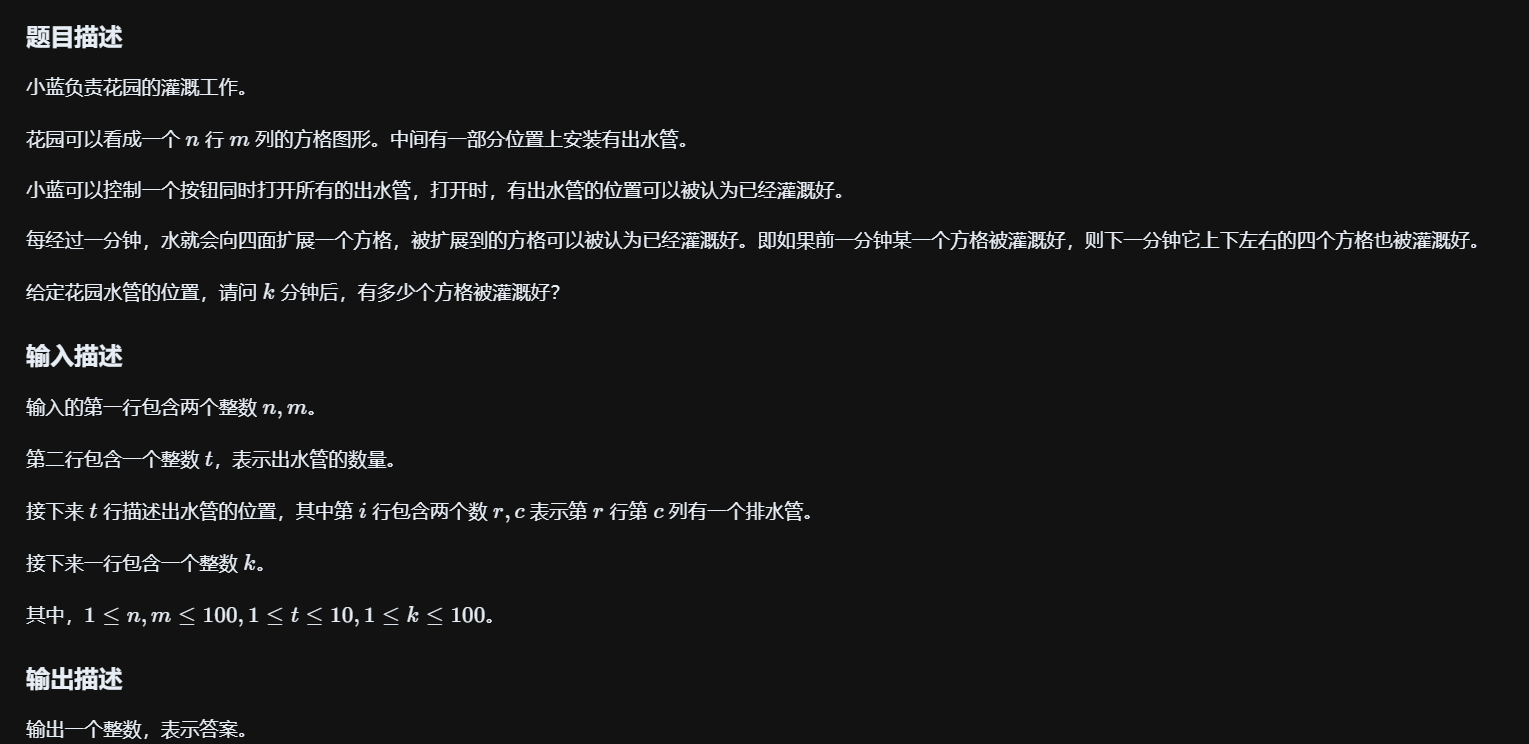1
2
3
4
5
6
7
8
9
10
11
12
13
14
15
16
17
18
19
20
21
22
23
24
25
26
27
28
29
30
31
32
33
34
35
36
37
38
39
40
41
42
43
44
45
46
47
48
49
50
51
52
53
54
55
56
57
58
59
60
61
62
63
64
65
66
67
68
69
70
71
72
| import java.util.Scanner;
import java.util.LinkedList;
import java.util.Queue;
class Node {
int x;
int y;
int floor;
public Node(int x, int y, int floor) {
this.x = x;
this.y = y;
this.floor = floor;
}
}
public class Main {
public static void main(String[] args) {
Scanner scan = new Scanner(System.in);
int n = scan.nextInt();
int m = scan.nextInt();
int t = scan.nextInt();
boolean[][] graph = new boolean[n + 1][m + 1];
Queue<Node> queue = new LinkedList<>();
for(int i = 0; i < t; i++) {
int x = scan.nextInt();
int y = scan.nextInt();
Node newNode = new Node(x, y, 1);
queue.add(newNode);
graph[x][y] = true;
}
int k = scan.nextInt();
int count = t;
while(!queue.isEmpty()) {
Node newNode = queue.peek();
if(newNode.floor <= k) {
queue.poll();
int centerX = newNode.x;
int centerY = newNode.y;
if(centerX - 1 >= 1 && graph[centerX - 1][centerY] == false) {
graph[centerX - 1][centerY] = true;
queue.add(new Node(centerX - 1, centerY, newNode.floor + 1));
count++;
}
if(centerX + 1 <= n && graph[centerX + 1][centerY] == false) {
graph[centerX + 1][centerY] = true;
queue.add(new Node(centerX + 1, centerY, newNode.floor + 1));
count++;
}
if(centerY - 1 >= 1 && graph[centerX][centerY -1 ] == false) {
graph[centerX][centerY - 1] = true;
queue.add(new Node(centerX, centerY - 1, newNode.floor + 1));
count++;
}
if(centerY + 1 <= m && graph[centerX][centerY + 1] == false) {
graph[centerX][centerY + 1] = true;
queue.add(new Node(centerX, centerY + 1, newNode.floor + 1));
count++;
}
} else {
break;
}
}
System.out.print(count);
scan.close();
}
}
|
